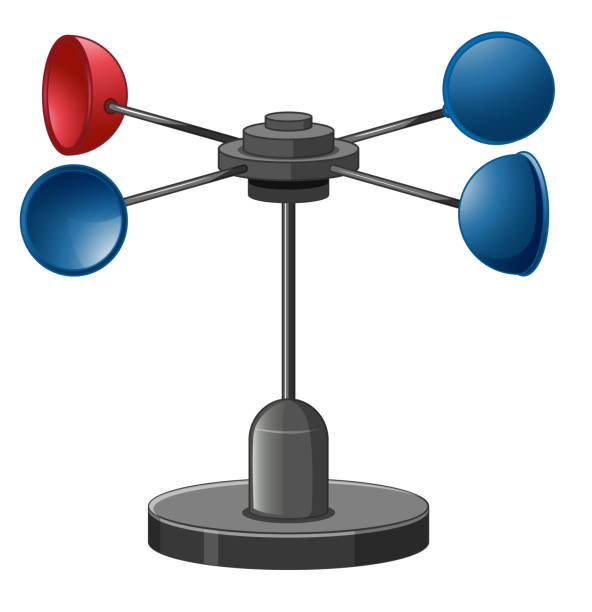All You Required to Learn About Anemometers: Just How They Function, Why They Matter, and Where to Use Them
Anemometers, though commonly overlooked in the realm of clinical instruments, play a vital duty in various fields, using beneficial understandings into wind speed and air flow patterns. As we dive right into the details of anemometer technology, we will certainly uncover the internal operations of these devices, their importance, and the essential factors to consider when picking the appropriate anemometer for particular applications.

Anemometer Fundamentals
A crucial tool utilized to determine wind speed and instructions, the anemometer plays a crucial duty in weather forecasting and different industries. An anemometer generally contains 3 or 4 cups that rotate in the wind, a vane that points right into the wind, and sensors to track the turnings or activities. By computing the turnings or movements over a specific time period, the anemometer can determine wind rate. The vane assists determine wind instructions by directing into the wind, giving beneficial data for weather projecting, aviation, maritime procedures, ecological monitoring, and wind power applications.
There are different kinds of anemometers offered, consisting of cup anemometers, vane anemometers, hot-wire anemometers, and sonic anemometers, each with its unique functions and applications. Mug anemometers are frequently used for fundamental wind rate measurements, while vane anemometers are liked for directional dimensions. Hot-wire anemometers appropriate for reduced airspeeds, and sonic anemometers are perfect for high-precision dimensions in research and industrial setups. Recognizing the fundamentals of anemometers is essential for precise wind information collection and evaluation across various fields.
Concepts of Anemometer Operation
Structure on the foundational understanding of anemometer essentials, the concepts of anemometer procedure elucidate the mechanics behind wind speed and instructions dimensions. Anemometers operate the concept of air movement impacting a sensor, causing it to turn. Cup anemometers, as an example, have three or more cups that capture the wind, causing them to spin quicker as the wind rate increases. The rotation rate is after that exchanged a wind rate dimension. Vane anemometers, on the various other hand, utilize a tail or a probe that aligns itself with the wind direction, supplying a measurement of wind direction based on the positioning of the sensor. Hot-wire anemometers depend on a heated cable that cools as wind overlooks it, with the price of cooling down identifying the wind speed. Ultrasonic anemometers step wind speed and direction by analyzing the moment it considers ultrasonic signals to travel between transducers. Recognizing these concepts is crucial for accurate and reliable wind dimensions in different applications.
Value of Anemometers
Anemometers play a critical duty in gauging wind rate and instructions, supplying necessary information for climate projecting, environment research studies, environmental monitoring, and air travel operations. Meteorologists depend on anemometers to gather accurate wind information, aiding them comprehend weather condition patterns, anticipate storms, and issue prompt cautions to the public. Wind farm operators use anemometers to evaluate wind conditions and make best use of electricity production from wind generators.
Applications Throughout Different Industries
Applications of anemometers cover throughout varied industries, showcasing their convenience and energy beyond weather forecasting. In the eco-friendly energy sector, anemometers play an important role in analyzing wind conditions for wind farm positionings, making read this article sure optimal power manufacturing. Industries like building and mining utilize anemometers to keep an eye on wind speeds, crucial for safety and security procedures, especially when functioning at heights or in open-pit mines where strong winds can pose dangers. Anemometers are additionally essential in the aviation market, helping pilots in understanding airspeed and wind direction for secure take-offs and landings. The maritime market gain from anemometers for ship navigation, assisting seafarers anticipate weather condition adjustments and adjust paths as necessary. In farming, anemometers assist farmers in handling plant splashing by providing real-time data on wind speed to stay clear of drift. Furthermore, anemometers discover applications in cooling and heating systems to optimize air flow and improve power efficiency in buildings. The diverse use cases of anemometers highlight their value throughout numerous sectors, highlighting their important duty in boosting functional safety and security and efficiency (anemometer).

Picking the Right Anemometer for Your Needs
Choosing the proper anemometer customized to your specific requirements is necessary for getting exact wind company website rate and direction measurements. When choosing an anemometer, consider elements such as the designated application, needed measurement variety, environmental problems, and preferred attributes. For basic purposes, a mug anemometer appropriates for measuring wind speed, while a vane anemometer offers wind direction data. Hot-wire anemometers are optimal for low airspeed measurements, and ultrasonic anemometers use high precision and longevity.

Verdict
To conclude, anemometers play a vital function in measuring wind rate and direction throughout different industries. Recognizing the concepts of anemometer operation is crucial for choosing the right tool for particular needs. From weather forecasting to air travel, anemometers are vital devices for collecting exact data and ensuring safety and security in various applications. When picking the most suitable gadget for gauging wind conditions., it is crucial to consider the importance of anemometers in order to make enlightened decisions.
There are different kinds of anemometers readily available, including cup anemometers, vane anemometers, hot-wire anemometers, and sonic anemometers, each with its one-of-a-kind features and applications. Cup anemometers are frequently used for basic wind speed measurements, while vane anemometers are liked for directional dimensions. Hot-wire anemometers are suitable for low airspeeds, and sonic anemometers are suitable for high-precision measurements in research study and commercial setups.Structure on the fundamental understanding of anemometer basics, the concepts of anemometer procedure clarify the mechanics behind wind speed Read Full Article and direction measurements. For basic functions, a mug anemometer is appropriate for determining wind rate, while a vane anemometer supplies wind instructions data.
Comments on “Why an Anemometer is Necessary for Your Environmental Information Collection”